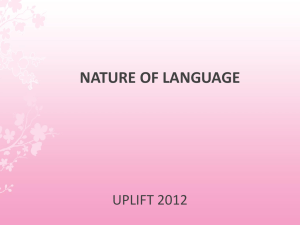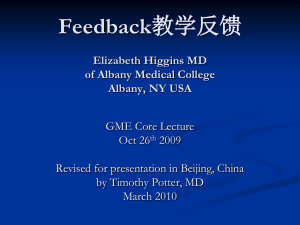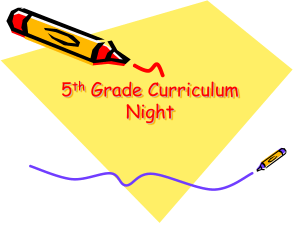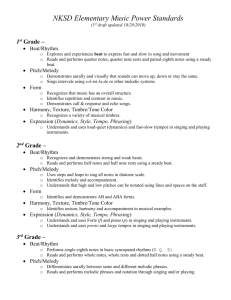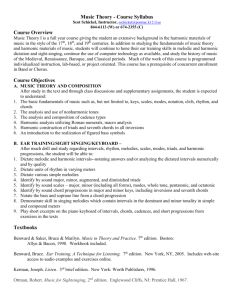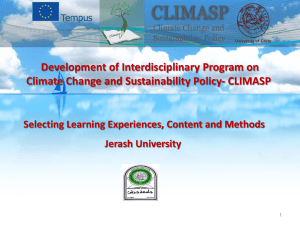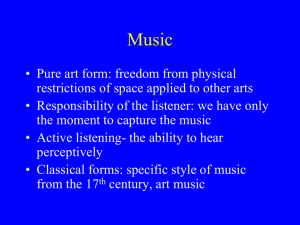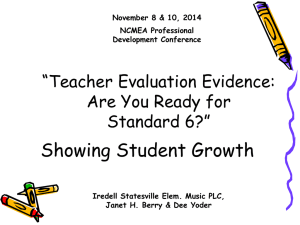K to 12 Music and Art Framework
advertisement
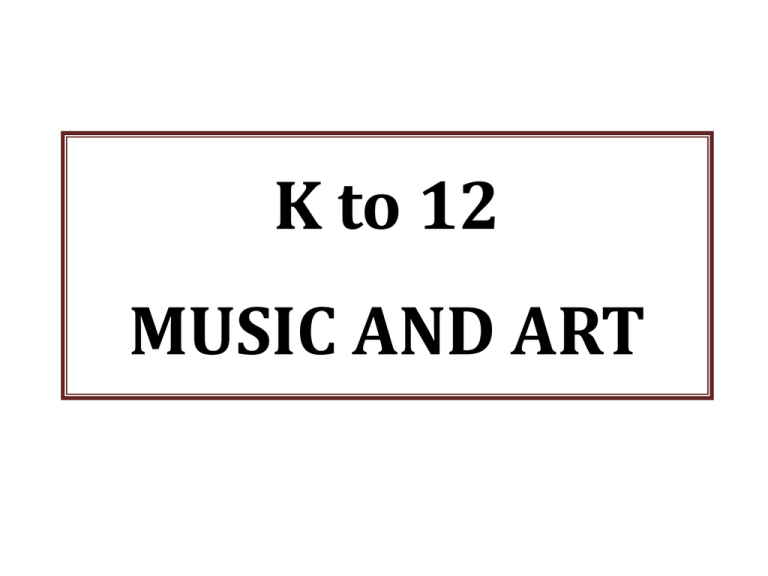
K to 12 MUSIC AND ART BASIC REFERENCES FOR MUSIC AND ART Music Elements • • • • • • • • • Rhythm Melody Tempo Form Timbre Dynamics Tempo Texture Harmony* * No formal instruction in harmony from K to 3 Music Processes • Listening • Reading • Imitating (recreating) • Responding • Creating • Performing (including movement) • Evaluating • Analyzing critically • Applying (transference Art Element and Principle • • • • • • • • • • Color Line Shape/Form Value Texture Rhythm Balance Emphasis Proportion Harmony Art Processes • Seeing/Observing • Reading • Imitating (recreating) • Responding • Creating • Performing (including movement) • Evaluating • Analyzing critically • Applying (transference) Philosophy and Rationale Music Education • MUSIC is both an AURAL and TEMPORAL art. • All elements and processes are interwoven artistically into a “TAPESTRY” moving in TIME and in diverse HISTORICAL and CULTURAL contexts. • The nature of music is expressive, ongoing and creative. • A student must learn to “hear”, “speak” and “think” in the medium of music. • The K-12 Music Curriculum advocates the • SPIRAL • MULTICULTURAL and • INTEGRATIVE approaches in music education and current philosophical thought in contemporary general education. Learning Area Music Learning Area Standard K to 12 The learner demonstrates understanding of: • Basic concepts and processes in music through: • Appreciation, analysis and performance for: • His/her self-development, • Celebration of his/her Filipino cultural identity and diversity • Expansion of his/her world vision. Key Stage Standard K to 3 • • • • The learner demonstrates understanding of: Fundamental processes through: Performing, Creating and Responding, aimed towards: Development of Appreciation of music, and Acquisition of basic knowledge and skills. Key Stage Standard 4 to 6 • • • • The learner demonstrates understanding of: Basic elements and concepts through: Performing, creating and responding, aimed towards: Development of appreciation of music and Acquisition of basic knowledge and skills Key Stage Standard 7 to 10 • The learner demonstrates understanding of: • Salient features of music and art of the Philippines and the world, through: • Appreciation, analysis, and performance, for self-development, • Celebration of Filipino cultural identity and diversity and • Expansion of one’s world vision. Key Stage Standard 11 to 12 The learner demonstrates understanding of and proficiency in the chosen art form or genre, through: • Appreciation, Analysis, and Performance, for: • Self-development • Celebration of Filipino cultural identity and diversity • Expansion of one’s world vision for • Professional preparation and aesthetic growth. Grade Level Standard Grade 1 • • • • • The learner demonstrates basic understanding of the fundamental processes in music, through: Performing Creating Listening Observing and Describing Responding Grade Level Standard Grade 7 • • • • The learner demonstrates basic understanding of the fundamental processes in music through Performing Creating Listening and Observing Responding. Scope and Sequence for Grade 1 Elements of Music First Quarter: Dynamics, Timber, Rhythm, Melody Second Quarter: Tempo, Melody, Rhythm, Form Third Quarter: Timbre, Rhythm, Melody, Form Fourth Quarter: Dynamics, Tempo, Texture, Review of all elements Scope and Sequence for Grade 7 First Quarter (Part 1): Review of Music Elements and Processes. Elements •Rhythm •Melody •Form •Timbre •Dynamics •Tempo •Texture •Harmony* *No formal instruction in harmony from K to 3 Processes •Listening •Reading •Imitating (re-creating) •Responding •Creating •Performing (including movement) •Evaluating •Analyzing Critically •Applying (transference) Scope and Sequence for Grade 7 First Quarter (Part 2): Music of Luzon (Highlands and Lowlands) Highlands Lowlands Scope and Sequence for Grade 7 Second Quarter: Music of Mindoro, Palawan and Visayas Scope and Sequence for Grade 7 Third Quarter: Music of Mindanao Scope and Sequence for Grade 7 Fourth Quarter: Representative Compositions of the Philippines National Artists in Music, Composers Genres: • (Vocal) Harana, Balitaw, Kundiman. • (Vocal Ensemble) Duets, etc., Choral. • (Instrumental) Solo, Ensemble, Orchestra • OPM Republic Act No. 4723 May 19, 1966 Passed By Senate An act giving importance to the teaching of music in the curricula of elementary and secondary schools, and appropriating funds therefore. 1. Music and Art 2. Physical Education The Revised Elementary Education Program Department Order No. 10, s. 1970 Music and arts is one separate subject area with Music allotted three days a week and Arts, two days. (Pursuant to the Music Law, R.A. 4723). The New Elementary School Curriculum 1983-84 MEC Order #6, s. 1982 No music in grades one and two.


